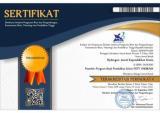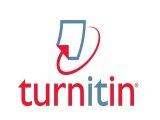Development of Acid-Base Titration Practicum Guide Using Natural Indicators of Butterfly Pea Flowers
DOI:
https://doi.org/10.33394/hjkk.v12i1.10813Keywords:
acid-base titration, natural indicator, butterfly pea flowerAbstract
Sustainable Development Goals (SDGs) need to be implemented to create environmentally friendly chemistry learning. This can be done in an acid-base titration experiment using natural indicators of butterfly pea flowers. This research aims to produce a practicum guide for acid-base titrations using natural indicators of butterfly pea flowers that are valid and practicum. The research design uses the ADDIE research design, namely Analysis, Design, Development, Implementation, and Evaluation. The research results showed that butterfly pea flowers can be used as a natural indicator for acid-base titrations with color changes from pink (acidic condition) to blue (basic condition). The resulting learning media is a practicum guide which has a validity of 92% (very valid) and a practicality level of 88.75% (very practical). This data was analyzed using qualitative and quantitative analysis. The practicum guide developed is valid and practical to use as a practicum learning media in schools.
References
Abugri, D. A., Apea, O. B., & Pritchett, G. (2012). Investigation of a Simple and Cheap Source of a Natural Indicator for Acid-Base Titration: Effects of System Conditions on Natural Indicators. Green and Sustainable Chemistry, 02(03), 117–122. https://doi.org/10.4236/gsc.2012.23017
Agustina, R., Rahma, S., & Chrismania Sandhira, A. (2022). Karakteristik Trayek pH Indikator Alami dan Aplikasinya pada Titrasi Asam dan Basa. Bivalen: Chemical Studies Journal, 5(2), 51–56. http://jurnal.fkip.unmul.ac.id/index.php/bivalen
Aini, F. Q., Fitriza, Z., Iswendi, I., Rivaldo, I., & ... (2023). Enhancing Students’ Science Process Skills through the Implementation of POGIL-based General Chemistry Experiment Manual: A Quantitative Study. Hydrogen: Jurnal …, 11(April). https://e-journal.undikma.ac.id/index.php/hydrogen/article/view/7498%0Ahttps://e-journal.undikma.ac.id/index.php/hydrogen/article/viewFile/7498/4491
Ardiansyah, B., Ramdani, A., Hakim, A., Makhrus, M., Education, S., Study, D., Nusa, W., Province, T., & Quality, E. (2023). Preliminary Study: Study of Supporting Facilities for Natural Science Mini Project Practicum Models of Junior High Schools in Mataram. Hydrogen: Jurnal Kependidikan Kimia, 11(December), 904–911.
Baunsele, A. B., Tukan, M. B., Kopon, A. M., Boelan, G., Komisia, F., Uron Leba, M. A., & Lawung, Y. D. (2020). Peningkatan Pemahaman Terhadap Ilmu Kimia Melalui Kegiatan Praktikum Kimia Sederhana Di Kota Soe. Jurnal Pengabdiankepada Masyarakat, 1(2), 43–48. http://dx.doi.org/10.36257/apts.vxix
Fitri, C. B. S., & Fikroh, R. A. (2021). The Potential of Clitoria ternatea L. Extracts as an Alternative Indicator in Acid-Base Titration. Jurnal IPA & Pembelajaran IPA, 5(4), 340–352. https://doi.org/10.24815/jipi.v5i4.23183
Hidayah, F. F., Imaduddin, M., Yuliyanto, E., Gunawan, G., & Djunaidi, M. C. (2022). Introducing the Small-Scale Chemistry Approach Through Inquiry-Based Laboratory Activities For Pre-Service Teachers. EduChemia (Jurnal Kimia Dan Pendidikan), 7(1), 14. https://doi.org/10.30870/educhemia.v7i1.13084
Kapilraj, N., Keerthanan, S., & Sithambaresan, M. (2019). Natural Plant Extracts as Acid-Base Indicator and Determination of Their pKa Value. Journal of Chemistry, 2019. https://doi.org/10.1155/2019/2031342
Nurfatimah, S. A., Hasna, S., & Rostika, D. (2022). Membangun Kualitas Pendidikan di Indonesia dalam Mewujudkan Program Sustainable Development Goals (SDGs). Jurnal Basicedu, 6(4), 6145–6154. https://doi.org/10.31004/basicedu.v6i4.3183
Purwono, B., & Mahardiani, C. (2010). Synthesis of Azo Compounds Derivative From Eugenol and Its Application As a Titration Indicator. Indonesian Journal of Chemistry, 9(1), 95–98. https://doi.org/10.22146/ijc.21568
Putra, A. (2022). Model GI-GI: Sistem Pembelajaran Active Learning Berbasis Student Centred Menggunakan Pendekatan Scientific Approach dalam Rangka Mewujudkan Tujuan ke Empat SDGs. Improvement: Jurnal Ilmiah Untuk Peningkatan Mutu Manajemen Pendidikan, 9(02), 105–121. https://doi.org/10.21009/improvement.v9i2.31354
Ratmini, W. S. (2017). The Implementation of Chemistry Practicum at SMA Laboratorium Undiksha Singaraja in the School. Jpi, 6(2), 242–254. https://doi.org/10.23887/jpi-undiksha.v6i2.11881
Rusiani, A. F., & Lazulva. (2017). Menggunakan Indikator Alami Berbasis Pendekatan Saintifik. Tadris Kimiya, 2 no 2, 11.
Safitri, A. O., Yunianti, V. D., & Rostika, D. (2022). Upaya Peningkatan Pendidikan Berkualitas di Indonesia: Analisis Pencapaian Sustainable Development Goals (SDGs). Jurnal Basicedu, 6(4), 7096–7106. https://doi.org/10.31004/basicedu.v6i4.3296
Soedirga, L. C., Matita, I. C., & Sidharta, J. (2023). Physicochemical Characteristics of Butterfly Pea Flower Petals Steep Obtained at Different Steeping Temperature and Time. Reaktor, 23(1), 9–15. http://ejournal.undip.ac.id/index.php/reaktor/
Wahab, A., Sartika, R. P., Studi, P., Kimia, P., & Tanjungpura, U. (2021). Pengembangan Penuntun Praktikum Titrasi Asam Basa Berbasis Inquiri Terbimbing. Education and Development, 9(3), 75–80.
Downloads
Published
How to Cite
Issue
Section
Citation Check
License
License and Publishing Agreement
In submitting the manuscript to the journal, the authors certify that:
- They are authorized by their co-authors to enter into these arrangements.
- The work described has not been formally published before, except in the form of an abstract or as part of a published lecture, review, thesis, or overlay journal.
- That it is not under consideration for publication elsewhere,
- That its publication has been approved by all the author(s) and by the responsible authorities – tacitly or explicitly – of the institutes where the work has been carried out.
- They secure the right to reproduce any material that has already been published or copyrighted elsewhere.
- They agree to the following license and publishing agreement.
Copyright
Authors who publish with Hydrogen: Jurnal Kependidikan Kimia agree to the following terms:
- Authors retain copyright and grant the journal right of first publication with the work simultaneously licensed under a Creative Commons Attribution License (CC BY-SA 4.0) that allows others to share the work with an acknowledgment of the work's authorship and initial publication in this journal.Â
- Authors are able to enter into separate, additional contractual arrangements for the non-exclusive distribution of the journal's published version of the work (e.g., post it to an institutional repository or publish it in a book), with an acknowledgment of its initial publication in this journal.
- Authors are permitted and encouraged to post their work online (e.g., in institutional repositories or on their website) prior to and during the submission process, as it can lead to productive exchanges, as well as earlier and greater citation of published work.
Licensing for Data Publication
Hydrogen: Jurnal Kependidikan Kimia uses a variety of waivers and licenses, that are specifically designed for and appropriate for the treatment of data: Open Data Commons Attribution License, http://www.opendatacommons.org/licenses/by/1.0/ (default) Other data publishing licenses may be allowed as exceptions (subject to approval by the editor on a case-by-case basis) and should be justified with a written statement from the author, which will be published with the article.










